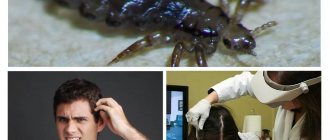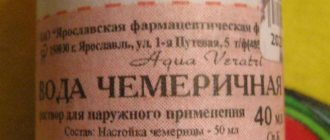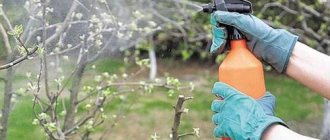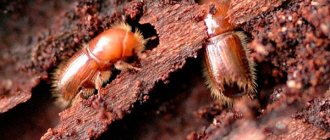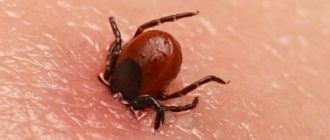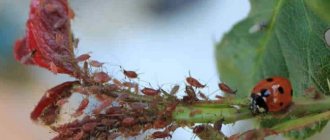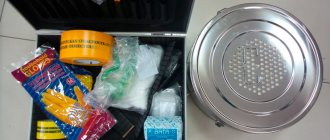Pediculosis is a disease caused by parasites such as body louse, head louse, and pubic louse. They are also carriers of typhus, relapsing fever, and Volyn fever. Those infected feel itching, a rash appears on their skin, rough areas appear, and pigmentation changes. In advanced stages, tangles form in the hair, an increased body temperature is observed, and the lymph nodes become enlarged. The seriousness of this disease is added by the high level of infection among the population: after all, only the clothes of the sick person will be a source of infection for another 3 months.
Order of the Ministry of Health No. 342
Thus, seemingly harmless lice is a socially dangerous disease that can quickly develop into an epidemic. We should not forget about the danger that the disease disrupts the harmonious functioning of the circulatory and nervous systems. If a pulmonary thrombus forms, it can be fatal.
Order No. 342 on pediculosis (anti-pediculosis styling is one of its constituent points) was adopted by the Ministry of Health of the Russian Federation in 1998. Its action is aimed at a comprehensive fight against the pathogens of pediculosis and typhus epidemics. It contains the following components:
- Prevention of typhus.
- Treatment of lice.
- Fighting pathogens.
- Measures to improve the epidemiological situation, sanitary and hygienic conditions in public institutions.
Let's look at anti-pediculosis styling in detail, an order for pediculosis.
Justification for issuing the order
The issuance of the order was justified by the massive spread of head lice in Russia, when the country recorded annual incidence statistics of up to 300 thousand people, and 75% of these cases were registered in children's institutions. A large number of patients were identified during hospitalization in medical institutions.
Outbreaks of pediculosis and exceeding the epidemic threshold were noted in some regions and republics of the Russian Federation, and the spread of body lice, which often became carriers of infectious diseases such as typhus and Brill's disease, was of great concern. According to the observations of doctors, a large number of patients were carriers of several types of lice at once: for example, 80% of the examined homeless people were diagnosed with simultaneous infestation with hair and body lice.
In Russia, unlike developed European countries, where typhus is not even mentioned, dozens of cases of this disease are registered annually, and in some areas about 100 cases of recurrent Brill's disease are detected annually.
There is a tendency that the diagnosis of typhoid is not carried out on time and many patients are hospitalized by mistake with other diseases, and the symptoms of typhoid are not detected. Often, a person's fever or rash was identified by doctors as an allergic reaction, meningitis, or other similar diseases. This happens as a result of insufficient professional training of doctors and staff, shortcomings in conducting analyzes and research.
Prevention of lice
Appendix No. 4 to this order prescribes the following measures to prevent the spread of lice:
- Routine examinations of the population by health workers in kindergartens, schools, dormitories, boarding schools, nursing homes, etc.
- Creating the necessary conditions to prevent the spread of lice during collective living: baths, showers, laundries with hot water, sanitary inspection rooms.
- Availability of adequate medical personnel to conduct examinations.
- Appropriate measures in foci of head lice infection.
- Explanatory educational program among the population.
Inspection for lice
According to Order No. 342 on pediculosis, anti-pediculosis styling can be avoided by preventing the spread of infection. The best preventative measure is inspection. It is carried out in a well-lit room using a magnifying glass or magnifying glass. The physician should pay great attention to the back of the head, temples and forehead.
The order recommends checking the following persons first (ideally four times a year):
- pupils of kindergartens, boarding schools;
- students of schools, secondary and higher professional institutions;
- teams of organizations, enterprises;
- patients admitted to hospital;
- residents of communal apartments and hostels;
- medical workers in contact with patients.
Prevention of head lice in children's institutions
Prevention of head lice
Prevention of pediculosis and typhus, measures taken in accordance with Order 342 on the territory of the Russian Federation, as well as decrees and orders of regional sanitary services provide for the timing of regular examinations of the population and especially children in groups in order to identify cases of pediculosis.
Prevention of head lice and typhus Preventive measures include periodic examinations of children:
- in preschool institutions - once a month;
- in schools and vocational educational organizations - 4 times a year;
- Inspection of students in boarding schools and orphanages should be carried out regularly in accordance with the laws of the Russian Federation;
- children who go to health camps are required to be examined before departure and every week thereafter;
- patients who are admitted for treatment to an inpatient department - upon admission and then weekly;
- employees of various organizations are examined during medical examinations and medical examinations.
If children entering a child care institution (preschool and school) are diagnosed with lice, they are sent for treatment and cannot attend this institution. After sanitization and a set of measures to destroy parasites, you must bring a medical certificate confirming that the child does not have head lice.
Order on pediculosis No. 342: anti-pediculosis styling
Many people are concerned about the fight against parasites that have already infected humans. The modern composition of anti-pediculosis styling is as follows:
- Bag for collecting the patient’s belongings: cotton or oilcloth.
- A galvanized tray or bucket where hair will be disinfected.
- Oilcloth bedding for manipulations.
- Latex gloves.
- A fine metal comb.
- Scissors and/or hair clipper.
- Alcohol lamp.
- 2-3 scarves.
- Disposable robe.
- Cotton pads.
- Table vinegar.
- The main elements in the composition of anti-pediculosis styling are means of destroying pubic and head lice: Ovicides for one-time treatment: shampoos, lotions, emulsion concentrates, etc.
- Neovicides (drugs with incomplete ovicidal action) for 2-fold treatment within a week to ten days. These are special soaps, shampoos and other products.
Pediculosis order 342 of the Ministry of Health of the Republic of Kazakhstan
The documentation states:
- the names of all students in the class or wards of the group;
- date of inspection;
- the name of the group or class itself;
- data on the absence or presence of blood-sucking insects (live or dead);
- number and address of the educational or preschool institution.
Treat hair with one of the disinfectant solutions according to the instructions for the disinfectant (for example, wet hair and rub in 20% benzyl benzoate emulsion and leave for 30 minutes or nittifor for 40 minutes).
A person becomes infected when such feces come into contact with scratches or insect bites, or when parasites are crushed on the skin. The louse dies only 7-12 days after infection.
The causative agent of relapsing fever, Obermeyer's spirochete, enters the intestines of louse with the blood of a sick person, then passes into the hemolymph and multiplies.
Prevention of typhus and pediculosis order
The causative agent of Volyn fever multiplies extracellularly in the intestines of the louse. A person becomes infected with typhus and Volyn fever when secretions of an infected louse get into the wounds where they scratch after a bite or when an insect is crushed. In lice feces that fall on clothing, rickettsia remain viable and pathogenic for up to 3 months or more.
Prevention of pediculosis and typhus, measures taken in accordance with Order 342 on the territory of the Russian Federation, as well as decrees and orders of regional sanitary services provide for the timing of regular examinations of the population and especially children in groups in order to identify cases of pediculosis.
Packing protective clothing and linen in a pack - medical gown, headscarf, mask, oilcloth apron, gloves. Polyethylene scarves - 2 pcs., oilcloth drape, towels - 2 pcs., cotton swabs, rod, shampoo, 6% vinegar solution, heated to 30°C; oilskin bag, scissors, fine-toothed comb.
Work on packaging, preparing working solutions, and processing things is carried out outdoors or in non-residential ventilated areas with special clothing, rubber gloves, safety glasses and respirators (cotton-gauze masks).
Prevention of pediculosis and typhus
Based on the results of identifying patients and parasite carriers, medical organizations send information to the territorial division of the government agency in the field of sanitary and epidemiological welfare of the population.
Body lice live in human underwear. Eggs are laid in the warmest places that are in contact with the skin (ruches, seams), in groups of 6-14 pieces per day. The louse lives up to 46 days. All stages of development are sensitive to temperature (a decrease in temperature is tolerated better than an increase). With a high fever, they can leave a feverish patient and crawl onto others.
The order of the Ministry of Health of the Russian Federation on pediculosis contains Appendix No. 4, which provides guidelines for the prevention and control of lice. Order number on pediculosis 342 dated November 26, 1998. The title of the document is “On strengthening measures to prevent epidemic typhus and combat pediculosis.”
In cases of registration of diseases of trichinosis, teniarhynchosis and taeniasis transmitted through meat, the territorial unit, together with the unit of the local executive body for veterinary medicine, organize and conduct a joint investigation of cases with examination of foci to identify factors and routes of transmission of diseases.
Composition of anti-pediculosis styling
Infectious agents (typhus, relapsing fever, Volyn fever) carried by lice are not transmitted transovarially (from the female to the offspring).
The virus enters human skin with insect feces, and infection occurs through wounds. The infection persists on clothing for up to 3 months. Typhus and Volyn fever are transmitted in this way.
The disease often causes complications; special laboratory tests are performed to confirm the diagnosis. Treatment is carried out with antibiotics.
Regulatory documents on pediculosis explain that those infected are individuals who are found to have dead or live lice, or dry, full-fledged nits.
Control over the implementation of this order is entrusted to the Vice Minister of Health of the Republic of Kazakhstan A.V. Tsoi.
According to Order No. 342 on pediculosis, anti-pediculosis styling is recommended to be used as follows:
- The person carrying out the treatment must wear a gown, a protective scarf and gloves.
- The patient is wrapped in oilcloth.
- The patient's eyes are protected with a towel folded in several layers to protect against the ingress of drugs.
- Carefully treat the patient's hair with the product, then cover his head with a cap for the time specified in the instructions for the drug.
- After treatment, the hair must be rinsed under running water.
- Next is the use of shampoo included in the styling.
- After the hair is dried, each strand should be combed with a sparse comb to look for eggs or dead lice.
- Re-examination of the patient to determine the success of the procedure.
- Treating the comb with alcohol or boiling water.
- Treating the premises with a pest control compound.
- The patient's belongings are placed in a special bag for further disinfection.
- The worker's gown, gloves, headscarf, as well as other disposable items used in the procedure are placed in a separate bag and disposed of.
According to the new order of Sanpin, the inspection log can be kept both electronically and in paper form. The last form of the journal is intended for recording initial information indicating the title of the documentation on the title page. Electronic variation is used in the future for reports on similar inspections to identify pests.
Anti-pediculosis styling. Each emergency department must have, in accordance with Order No. 410, a facility for examining and treating a patient with head lice. Medical personnel must work in special clothing and protective equipment for the skin of the hands and mucous membranes.
If symptoms of lice are detected on a child’s skin, the health worker is obliged to notify the class teacher or group teacher, who in turn notify the parents about the detected case of lice. The child’s relatives also receive recommendations on the selection and use of an effective pediculicide.
Order on pediculosis 342: anti-pediculosis styling composition. Ministry of Health of the Russian Federation: Order dated November 26, 1998 N 342. Order 342 dated 26111998 on head lice styling Board. Order on pediculosis 342: anti-pediculosis styling. Prevention of typhus and pediculosis, order 342. New order on pediculosis 342. Order 342 on pediculosis, new 2015. On approval of the Rules for the provision of hospital-replacement care.
Order on pediculosis 342: anti-pediculosis styling, composition
Comb your hair with a fine comb, tilting your head over white paper, sequentially, dividing the hair into strands and combing each strand.
The head louse and body louse belong to the same genus Pediculus and are very similar in appearance. However, they have morphological differences, which can be determined using a magnifying glass with two- and ten-fold magnification or a microscope*.
The styling contains drugs that destroy parasites. Customers are children's schools and preschool institutions, government, public and social services and private individuals.
Order of the Minister of National Economy of the Republic of Kazakhstan dated March 31, 2015 No. 283. Registered with the Ministry of Justice of the Republic of Kazakhstan on May 5, 2015 No. 10933.
They occur according to the type of volumetric processes in the liver, lungs, brain, heart and bones. The causative agents are tapeworms.
Previously, pediculosis was treated radically by shaving the hair and treating the skin with kerosene; now many types of shampoos, powders and other medicines have been developed. They kill not only adult parasites, but also nits.
The Ministry of Health includes a set of measures aimed at improving sanitary and hygienic conditions and the epidemiological situation in public institutions and organizations.
The order recommends checking the following persons first (ideally four times a year):
- pupils of kindergartens, boarding schools;
- students of schools, secondary and higher professional institutions;
- teams of organizations, enterprises;
- patients admitted to hospital;
- residents of communal apartments and hostels;
- medical workers in contact with patients.
The order of the Ministry of Health of the Russian Federation on pediculosis contains the following instructions and guidelines as appendices:
- the procedure for carrying out and improving the organization of anti-epidemic measures in the source of infection;
- diagnosis and treatment of typhus and Brill's disease;
- methods for diagnosing diseases transmitted by pediculosis;
- organization and implementation of measures to combat pediculosis in institutions.
A prerequisite for effective destruction of parasites is disinsection of the patient’s clothing and premises. After the procedure, all things that were on the handler are put into a bag and disposed of.
Order of the Ministry of Health of Ukraine “On the provision of extraordinary messages to the Ministry of Health of Ukraine” No. 190 dated May 23, 2002.
Outbreaks of pediculosis and exceeding the epidemic threshold were noted in some regions and republics of the Russian Federation, and the spread of body lice, which often became carriers of infectious diseases such as typhus and Brill's disease, was of great concern.
The Department of State Sanitary and Epidemiological Supervision, the Department of Organization of Medical Care to the Population, and the Department of Maternal and Child Health to organize in the first quarter of 1999 an inspection of the work of health authorities and state sanitary and epidemiological supervision centers in the Kostroma, Lipetsk regions and Moscow on the prevention of epidemic typhus and the fight against head lice.
To combat parasites, products such as vinegar, pyrethrum powder, tar soap, and various lotions, such as Nittifor, are used.
To identify patients with echinococcosis and alveococcosis, medical organizations use complex research methods: seroimmunological and X-ray instrumental (ultrasound of the abdominal cavity, fluorography of the lungs).
Minister of Health of the Republic of Kazakhstan dated 03 temperature measurement and examination for lice. Order of the Ministry of Health of the Republic of Kazakhstan No. 931 dated December 8, 2021 This order comes into force from the date of its first official publication. RK LS 5 No. 121823. 342.296..
Order 342 prevention of pediculosis and typhus
Pediculosis is a completely preventable disease. To do this, you need to remember the need to maintain personal hygiene, regularly examine children and adults, and at the first signs of infection, immediately take appropriate measures to eliminate parasites.
Three types of lice parasitize humans: body lice (Pediculus vestimenti de Geer), head lice (P. capitis de Geer) and pubic lice (Phthyrus pubis L.).
Laboratory diagnosis of parasitic diseases is carried out by clinical diagnostic laboratories of state and non-state medical organizations, state organizations of the sanitary and epidemiological service.
Application of anti-pediculosis styling
According to Order No. 342 on pediculosis, anti-pediculosis styling is recommended to be used as follows:
- The person carrying out the treatment must wear a gown, a protective scarf and gloves.
- The patient is wrapped in oilcloth.
- The patient's eyes are protected with a towel folded in several layers to protect against the ingress of drugs.
- Carefully treat the patient's hair with the product, then cover his head with a cap for the time specified in the instructions for the drug.
- After treatment, the hair must be rinsed under running water.
- Next is the use of shampoo included in the styling.
- After the hair is dried, each strand should be combed with a sparse comb to look for eggs or dead lice.
- Re-examination of the patient to determine the success of the procedure.
- Treating the comb with alcohol or boiling water.
- Treating the premises with a pest control compound.
- The patient's belongings are placed in a special bag for further disinfection.
- The worker's gown, gloves, headscarf, as well as other disposable items used in the procedure are placed in a separate bag and disposed of.
Measures to strengthen the fight against pediculosis
Typhus
Typhus or rickettsiosis is a severe infectious disease in which destructive changes in blood vessels occur and the development of generalized thrombusculitis. Symptoms of this disease are:
- fever and temperature;
- intoxication of the body;
- roseola-petechial rash.
The disease often causes complications; special laboratory tests are performed to confirm the diagnosis. Treatment is carried out with antibiotics.
Brill's disease is a relapse or exacerbation of previously suffered typhus, and it can manifest itself without infection with lice. Its causative agent can persist for a long time in the body of people who have previously had typhus.
The 342nd number of the order on pediculosis contains as an appendix methodological instructions on how to correctly carry out measures in the epicenter of an epidemic in the event of a mass infection of people with typhus or Brill's disease. The main points of these instructions:
- Recommendations for doctors and health workers of medical institutions on the timely identification of patients with typhus or those who are suspected of having this disease.
- It is mandatory to submit reports on morbidity statistics every month and year.
- When a source of epidemic is identified in the patient’s area of residence, rest and work, mandatory disinfection of the premises is carried out, and all places where the patient has been over the last 21 days (incubation period) are taken into account.
- The contacts of the sick person are identified, the belongings of his belongings are identified, and he himself is subject to hospitalization in a local infectious diseases hospital for examination and treatment.
- When pediculosis is detected, special treatment and pest control measures are carried out.
- All items must be processed in a disinfection chamber;
- Blood tests are taken from all people who came into contact with the patient, serological diagnostics are carried out in a special laboratory to identify the sick, and in the future it is necessary to monitor their condition.
- All data is entered into an epidemiological survey map of the outbreak, which is then processed and registered with a special body dealing with especially dangerous infections for state sanitary and epidemiological surveillance in a given region of Russia.
Pediculosis
Appendix No. 4 contains regulatory documents on pediculosis, which define the role of lice in the spread of severe infectious diseases and recommends regular measures to combat pediculosis among the adult population and in children's institutions.
The first 2 species are carriers of infectious agents such as typhus, relapsing fever, and Volyn fever.
The greatest danger in the event of epidemics are body lice, which, after consuming the blood of a patient, can become carriers within 5-7 days and transmit the infection to healthy people. The causative agents of these diseases are found in the stomach and feces of lice. Human infection occurs when secretions from infected louses get into wounds and scratching areas on the body.
We suggest you read: How to deal with indoor ants
The fight against pediculosis in the order provides for the following exterminatory and preventive measures:
- to prevent the appearance and further spread of lice, a set of hygiene measures is recommended, which includes washing the body once every 1-1.5 weeks, periodically changing linen when it is dirty, regularly cutting hair and washing underwear and outerwear;
- if parasites are found, then their destruction must be carried out both on the body of the sick person, and on his clothes, and bedding;
- if the number of insects is small, then they can be destroyed mechanically, that is, combing out lice and nits using a special comb or cutting off the hair; all collected parasites and hair are collected on paper and then burned;
- if lice and larvae are found on the body, disinfection and sanitary treatment are carried out, including washing with hot water and soap and a complete change of linen;
- to kill body lice, it is recommended to use pediculicides or boiling linen, as well as ironing all seams and folds;
- in hospitals, boarding schools, and children's institutions, processing is carried out by medical personnel;
- at home, the destruction of lice is carried out by residents under the control of the sanitary and epidemiological departments;
- to get rid of head lice, it is recommended to use insecticidal preparations and subsequent rinsing with a 5% acetic acid solution;
- It is prohibited to apply pediculicidal agents to children under 5 years of age, pregnant and lactating women, as well as people with skin diseases;
- underwear, bed linen, and clothing are soaked in water with the addition of special disinfectants.
Effective means
The following products are effective in styling:
- vinegar solution;
- 20% benzyl benzonate emulsion;
- pyrethrum powder;
- 5% boric ointment;
- 0.15% solution of karbofos;
- dust or tar soap;
- Medifox;
- lotion "Nitilon", "Loncid", "Nittifor".
For things:
- soda ash;
- "Medifox-Super";
- 50% concentrate of sulfidos, karbofos;
- pyrethrum powder;
- 20% water-kerosene-soap emulsion.
Prevention of lice and pediculosis
We reviewed Order No. 342, anti-pediculosis styling. Finally, let’s see what effective preventive measures this document recommends:
- Periodic bathing with mandatory washing of hair - at least once every 10 days.
- Change of bed linen - at least twice a month.
- Systematic washing of clothes and personal items as they become dirty, followed by treatment with an iron with a “steam” function.
- Daily combing of hair, cutting as necessary.
- Cleaning outerwear items and following the rules for storing them.
- Periodic wet cleaning of the house.
- Keeping your home clean.
Order No. 342 of the Ministry of Health of the Russian Federation offers effective measures for the prevention, treatment, and detection of head lice and typhus. It also contains a special anti-pediculosis composition that helps to quickly deal with the problem.
Main points of the order
Order on pediculosis
The order on pediculosis, issued by the Ministry of Health of the Russian Federation in 1998, contains the following instructions:
- All health care organizations should organize an inspection of state epidemiological surveillance centers in the Lipetsk, Kostroma regions and Moscow for the prevention of typhoid epidemics and work to combat head lice.
- Conduct regular reviews of documentation and medical records of patients who have contracted typhus or Brill's disease.
- Develop standards for correct diagnosis and effective treatment of such patients.
- Conduct test control to test the professional knowledge of doctors in the field of diagnosis and treatment of pediculosis and typhus.
- Carry out organizational work and take preventive measures to reduce the likelihood of epidemics, to effectively combat pediculosis, guided by the documents attached to the order.
- Improving the financing of medical institutions for the purpose of purchasing drugs for the treatment and diagnosis of head lice and typhus, purchasing disinfection chambers for treating things and patients.
- Organize annual seminars for epidemiologists, hospital and laboratory staff to improve the diagnosis of diseases transmitted by lice.
- Creation of new and equipping existing special bacteriological laboratories for the diagnosis of the listed diseases.
- Provide treatment and prevention organizations and institutions with disinfection chambers, immunobiological preparations and preparations for lice removal.
- The media need to inform and warn the population about how to carry out personal and public prevention of head lice epidemics, and notify about effective methods of combating parasites.
We suggest you read: How to drink wormwood and why
The order of the Ministry of Health of the Russian Federation on pediculosis contains the following instructions and guidelines as appendices:
- the procedure for carrying out and improving the organization of anti-epidemic measures in the source of infection;
- diagnosis and treatment of typhus and Brill's disease;
- methods for diagnosing diseases transmitted by pediculosis;
- organization and implementation of measures to combat pediculosis in institutions.
